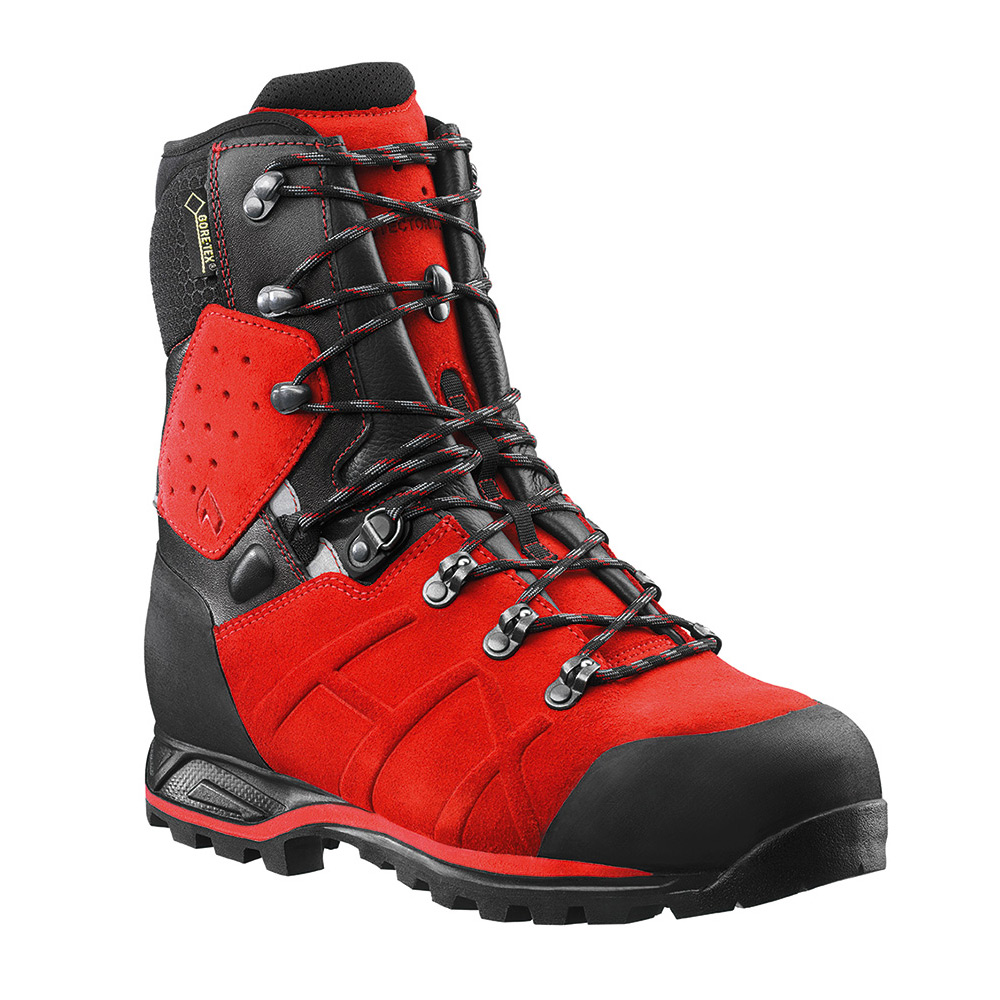200 Feet High and Still Looking Up: Ben Woroniuk on his Forestry Climbing Journey
In the time it takes you to read this article, forestry climber Ben Woroniuk might only have advanced 1/8 of the way up a tree on a job site.
You might think that makes Woroniuk a slow climber, but it's actually the opposite. You see, he's climbing some of the tallest trees in the world—often over 200 feet high.
"It can take actual hours to get to the top of some of these trees,” Woroniuk said of the old growth forests in British Columbia, Canada."
"The tallest tree I have ever climbed was last year on my hazard tree project. I never took an official measurement, but my 200-foot rope was hanging in the air by at least 30 feet. It was an unbelievable experience; it took a full day to remove that single tree."
What it Takes to do "the Coolest Job Imaginable"
Woroniuk's official title is "forestry climber," but one look at the videos on his social media account @benoftheforest will show you that that phrase doesn't come close to covering all the tasks that are involved in his role.
"We jump between logging, falling, climbing, and powerline clearance depending on the season or workload at the time," he said.
Woroniuk puts these skills to use as part of an Integrated Ops team who specialize in single-stem logging, helicopter salvage operations, and conventional hand-falling and logging. Additionally, Ben and his team assist in wildland firefighting during the summers by sending fallers to cut trees with the intention of slowing the spread of wildfires.
Single-stem logging, also known as heli-logging, is the process of climbing, topping, and removing a tree with a helicopter. Woroniuk explains it best: "Each tree is stripped of limbs and top by the climber, leaving a standing pole in the forest. Once all the trees in the block have been climbed, we then 'jig' the trees, meaning we cut them at the base so they stay standing but can be snapped off the stump by a helicopter with a claw."
Many people leave comments online asking Woroniuk why they use this process when toppling the trees in a remote forest has no potential for property damage or personal harm.
"These trees have been marked by foresters as meeting the specifications to become a transmission pole," Woroniuk explained. "Single stem logging is a way for us to harvest high-value, pole-quality cedar without damaging the forest around the individual trees."
This form of logging can take months, but the results would be unattainable without the process: 1000s of perfectly preserved, pole-quality trees ready for market and no damage to the surrounding forest, soil, or animal habitats.
The Journey From Arborist to Climber
Woroniuk got his start as an arborist in Smithers, British Columbia, a small northern town of about 5000 people. While there, he found a passion for climbing and knew he wanted more.
"I always enjoyed climbing more than other avenues of this industry," Woroniuk said. "I put in the time to earn my certified utility arborist ticket so that I could work around powerlines and earn more."
Once he racked up other tickets—a nickname for arborist certifications—Woroniuk started his own contracting business and focused on raising his skills. Eventually he was able to join his dream company: commercial forestry group Integrated Operations.
"Once my foot was in the door at [Integrated Ops] there was no looking back," he said. "I now supervise and personally look after multiple projects—all while also being a huge part of our growing social media presence."
Woroniuk's role has grown considerably since his days as a small-town arborist. He creates his crew's work plan, helicopter schedule, and emergency medivac plan for each expedition. Once that's established, it's time to get to work.
"We usually have a decent hike to find our work for the day, whether that be single-hazard tree targets, or our work area for the day in single-stem," said Woroniuk. "After that, we do it all in reverse and make our way back to camp for some much-needed soup."
One recent video on Ben's Instagram shows a particularly intense day when his crew were dropped off by helicopter, hiked, felled trees, and then used the wood to build a helicopter landing pad for their own pickup.
"It feels pretty unbelievable when we get to put all of our skillsets together in a single day," Woroniuk said. "When we get sent to areas where we need to open up access and build [helicopter landing] pads, it comes with a sense of excitement because we never fully know what we're getting into until our boots are on the ground. Then we are on the time crunch to build the access we need to get off the hill at the end of the day.
"It truly is one of the coolest jobs imaginable."
The Best Waterproof Forestry Boots
Last year, HAIX reached out to Woroniuk to try a pair of our forestry boots in the field. Not only was he already familiar with our products, but he also had his eye on a pair already.
"I decided on the red Forestry Protector Ultras, as I had seen a couple of the guys in my industry wearing them and they loved them," Woroniuk said. "I was beyond impressed with how they performed in the field. I can say with complete honesty that these boots made the long hikes and large climbs considerably easier compared to any other boots I have tried in the past."
Ben has high praise for his Protector Ultras, but in his mind their biggest endorsement comes not from his words, but rather his dry feet at the end of a long day.
"The waterproofing on these boots is unmatched in my opinion. And for someone that works on the rainy west coast 12 months out of the year, it carries a lot of weight for me to consistently end the day with dry feet‐even if everything else didn't end up that way."
Ben's Most Unforgettable Day of Climbing? His First.
When Woroniuk looks back on his career, he says there are many moments that he'll never forget. The one that stands out the most, however, is his difficult—but ultimately triumphant—first day as a forestry climber.
"Coming from an arborist background I thought it would be a smooth transition into forestry climbing but I can assure you it is harder than you think," he said.
"I remember struggling hard and feeling defeated not being able to keep up with the guys that have been doing this for years.
"After injuring myself in the first shift and almost getting cut from the team, I pushed through and eventually met my 10-tree quota for the day. I remember getting out of the heli at the end of the day and being met with a celebration from the crew.
"To come from that to now running crews and training the next generation will always feel surreal."







